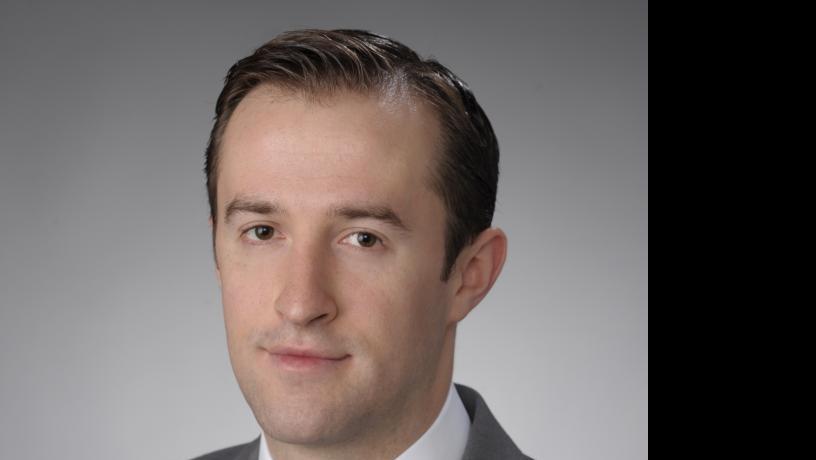Innovations in Mechanical Engineering Education
Yevgeniy Yesilevskiy is pushing the boundaries of mechanical engineering education to transform undergraduate students into the problem solvers of tomorrow. “The purpose of undergraduate engineering education is to create independent thinkers who aren’t afraid to be creative problem solvers,” says Yesilevskiy, who joined the department in July 2019 as a Lecturer in Discipline in the Department of Mechanical Engineering. “The future is undefined, and we can’t anticipate the problems the future will bring. My goal is to give students the tools to recognize and articulate these problems, especially when constraints aren’t well defined, and have the confidence to implement solutions.”
Yesilevskiy received his PhD from the University of Michigan in 2018, his MS from the University of Michigan in 2016, and his BE from The Cooper Union in 2013. He joined Columbia from the Syracuse University College of Engineering and Computer Science. In his PhD work at the University of Michigan, he conducted research in the simultaneous optimization of gaits, motion, and morphology on realistic simulations of monopod, biped, and quadrupedal robots. “I was interested in seeing how we could build the most energetically economical legged robots,” he explains. ”By figuring out the best way for these simple robots to move, I sought a better understanding of why humans and animals move the way they do.”
At Columbia, Yesilevskiy teaches undergraduate Mechanical Engineering students Lab 1, Machine Design and Senior Design classes. For Lab 1, he is implementing new approaches to active learning and has received a grant to study the benefits of this learning technique. “This fall, I am transforming Lab 1, the first hands-on mechanical engineering course undergraduate students take, into a student-driven initiative,” he says. “Historically, the Lab 1 class consists of four experiments, in which students receive instructions to conduct a pre-defined experiment, obtain the results, and write a paper. I am introducing an experimental design component in which, instead of receiving those step-by-step instructions, the students design their own experiments. This is a completely new approach to Lab 1 that gives students more choices and independence in their educational process.”
“Students often tell me they have a lot of anxiety when they are asked to come up with solutions to problems that aren’t well formulated,” Yesilevskiy explains. “My teaching style is focused on getting students more comfortable with this uncertainty. Mechanical engineering is at the intersection of many different fields, such as biology and computer science. Helping students to gain experience in a large variety of subject matter prepares them to develop new technologies to boldly confront problems that will improve our world and quality of life.”
Yesilevskiy’s creative, action-oriented method for problem solving was swiftly implemented this past spring, during the height of the Covid pandemic in New York City, when existing manufacturing lines for traditional face shields were stretched too thin to meet demand. Yesilevskiy collaborated with Columbia Engineering faculty and technical staff to create novel designs for face shields that can be manufactured at scale, by the tens to hundreds of thousands per day. “Jeffrey Kysar, the Director of the Department of Mechanical Engineering, learned from Anil Lalwani, MD, his research colleague at New York Presbyterian, about the urgent need for face shields at the NYP hospital network,” explains Yesilevskiy. “Jeff contacted me about the problem, and within a week of receiving Jeff's call, I led a design team that included Jeff, Anil, Andrei Shylo, Senior Lab Technician and William Miller, Lab Manager of the Columbia Makerspace, to develop a face shield that could be cut out of a single piece of plastic (FaceShieldOne), drastically reducing the complexity of the manufacturing process and the number of materials that had to be sourced.”
Once the design was completed and approved by the hospital network, the team immediately began working with a local manufacturer to ramp up production. “The NYP network ordered two million face shields, as they sought to meet their 50,000 per day demand,” explains Yesilevskiy. “As the manufacturer was setting up the production line, Kristin Myers, Associate Professor of Mechanical Engineering, and Amanda Lombardo, Senior Lab Technician, led the charge to purchase over two tons of thin plastic sheets. Andrei, William and I began cutting out thousands of face shields on the waterjet in the Columbia Makerspace to hold the hospital network over until the manufacturer could begin production. In the end we cut out approximately 16,000 before the manufacturer began deliveries.” This and other face shield designs from Columbia’s engineering team are now in use or production at other New York City hospitals, as well as in Europe, Thailand, and around the globe.
For his Machine Design and Senior Design classes, Yesilevskiy is incorporating innovative learning techniques that give students the tools to bring their thoughts from idea to a compelling project with broader appeal . “I’m placing a larger focus on failing early and learning from your failures,” he explains. “The students will develop a prototype early on, using materials such as cardboard, clay, and moldable plastic, before they go too far in the development process, and learn from these early models. I’m also working with Harry West, Professor of Practice, to introduce ideation techniques and encourage students to seek user input to improve their designs. Additionally, I am placing a big emphasis on presentation techniques and public speaking so students can pitch their designs and receive feedback about their projects.” Innovations in hands-on learning will be expanded even with the advent of remote learning. “Since Columbia classes transitioned to online, we have been sending students project kits so they can work on their projects at home,” says Yesilevskiy. “Our Senior Design students are receiving $1,000 worth of equipment such as 3D printers, soldering irons, electronic tools, modeling clay, and motors. Our juniors are getting project kits, too. I will assure these students have everything they need to make the most out of their mechanical engineering education.”

